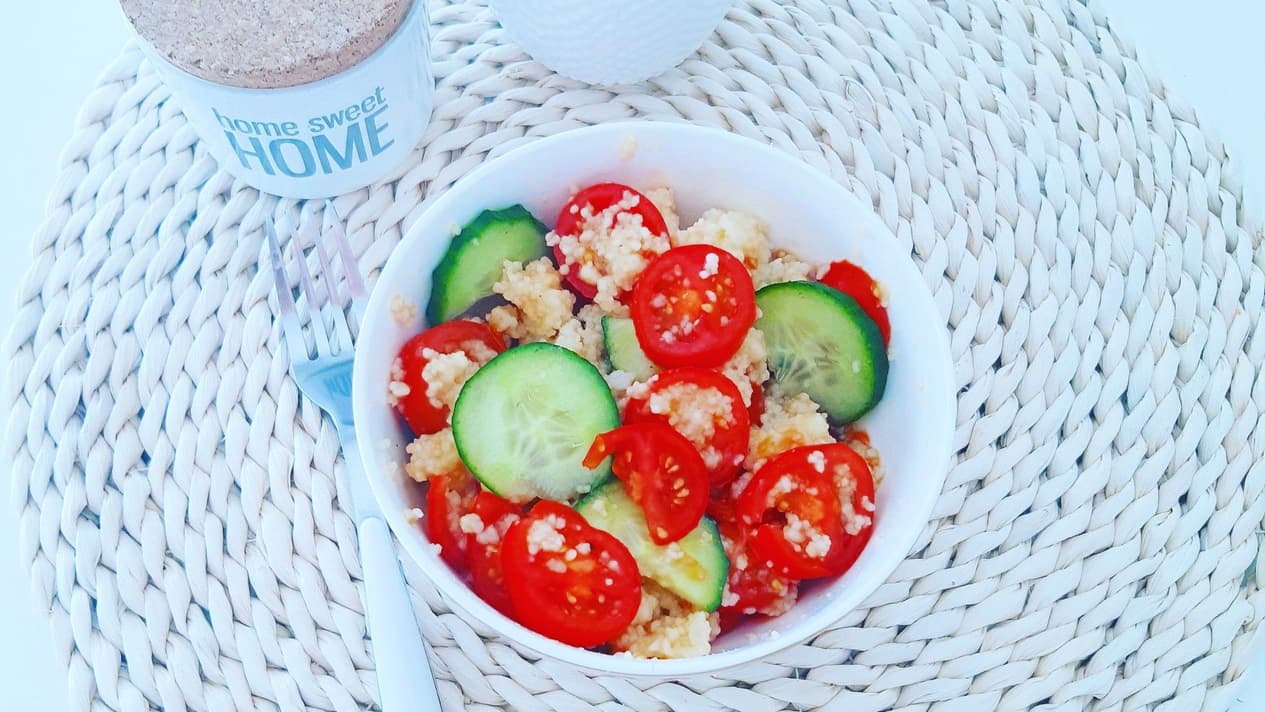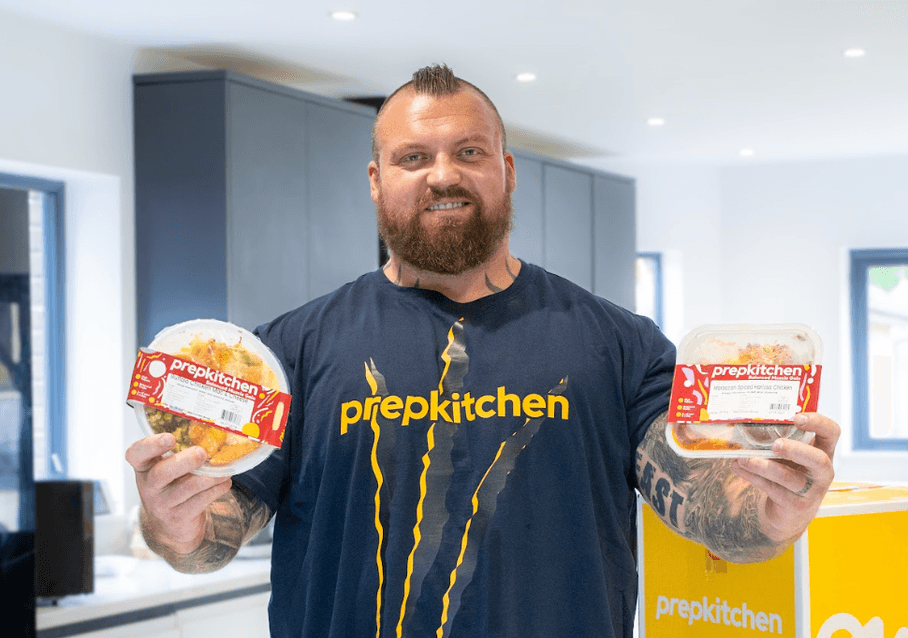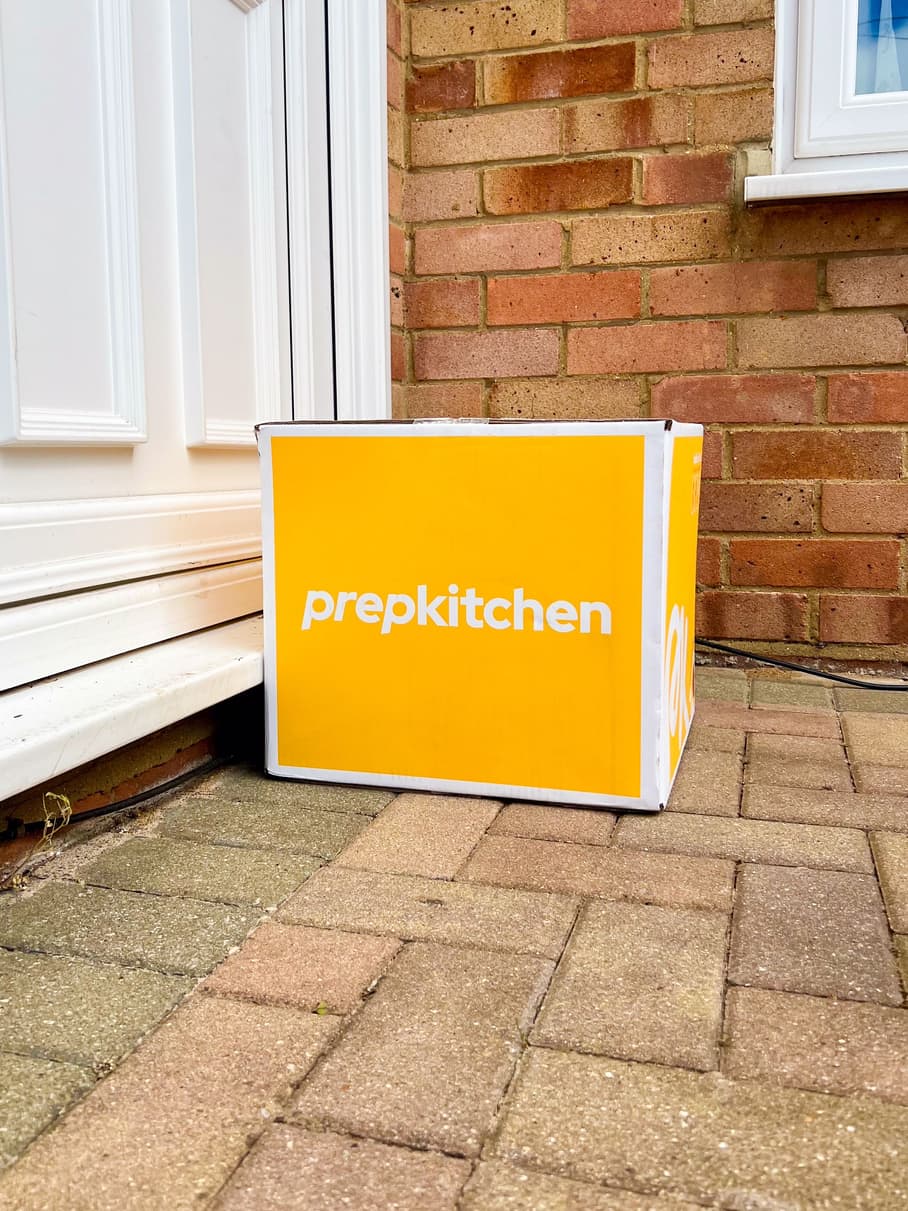If you want to lose weight, the maths is quite simple: burn more calories than you consume. Reducing your daily calorie intake isn’t always easy, but the good news is that there are some savvy ways to do this, and you'll barely notice!
These quick and easy tips will help you cut those hidden calories you probably don't realise you're eating!
1. Beware of dressings
Salad dressings can turn a healthy meal into a high-calorie meal. Even with a salad bowl, adding a standard creamy dressing can add on 100+ calories. Don’t be fooled by fat-free dressings either, as many brands add sugar to compensate for removing fat; some fat-free dressings contain up to 80 calories for two tablespoons.
When dining out, ask for all the sauces and dressings on the side, then you can control how much of them you're eating. For more tips on eating healthy when eating out, click here.
When making your own salad dressings, use lemon juice, herbs, sea salt, black pepper, and a tablespoon of extra-virgin olive oil for a delicious, low-calorie, healthy alternative.
2. Avoid added sugars
We all love adding sweetness to our tea or coffee; however, with a teaspoon of sugar containing 20 calories and a tablespoon containing 60 calories, this can quickly bump up your daily calorie intake.
If you can't bear to drink your bevvies without a sweetener, replace sugars with natural low-calorie sweeteners such as xylitol, Stevia, or erythritol.
Reduce the number of teas and coffees you drink, especially if you also add milk, and expand your hot drink repertoire to include different herbal teas, which have more flavour and don't need milk or sweetening - a slice of fruit and some herbs or spices add a further flavour boost.

3. Switch to zero-calorie soft drinks
A can of regular Coke contains seven teaspoons of sugar and 140 calories. One of the quickest and easiest ways to deficit your calories is by switching to zero-calorie soft drinks, such as Diet Coke, 7Up Free, and several other zero-calorie drink options. Be aware that there are concerns over consuming large amounts of artificial sweeteners, though(41), so everything in moderation! For a healthier soft drink alternative, drink sparkling mineral water with a dash of lime or lemon, a hunk of ginger, your favourite fruit, fresh herbs such as mint, or cool cucumber - delicious!
4. Eat more low-calorie foods
Fill up on low-calorie foods, such as mushrooms, celery, cucumber, lettuce and cabbage! Some vegetables are so low in calories that your body burns almost as many calories digesting them ( 1). Bulk your meals with vegetables so that you can increase food volume without the added calories.
5. Beware of fruit juices!
Fruit juices are frighteningly high in sugar and calories, with a glass of orange juice serving 110 calories and 21 grams of sugar. One study linked drinking 100% fruit juice to slow weight gain over time ( 2, 3). They can also cause blood sugar spikes followed by blood sugar dips, which will then have you reaching for more sugary snacks and more calories. Swap fruit juices for smoothies containing the whole fruit - these will contain more nutrients and more fibre, which will fill you up and be digested more slowly. View these as part of your daily food intake rather than as a drink.
6. Drink more water
Sometimes your body isn’t hungry- it’s just wanting water. Most people confuse thirst for hunger, often mistaking the former for the latter. Studies show that 37% of people mistake hunger for thirst because thirst signals can be weak. So, before you reach for that fridge handle or pantry, walk yourself to the sink and drink a glass of water and wait 10-15 minutes before deciding to eat.
It is important to stay hydrated- don’t wait for your body to tell you it’s thirsty for you to drink. Staying hydrated helps you curb cravings and aids digestion ( 4).
The daily recommended intake of water for a male is ten glasses (2.5 litres) and for a female, eight glasses (2 litres). This should be increased by at least an extra cup for pregnant and breastfeeding women. Children should aim to have four to six cups a day, depending on their age ( 5, 6 ).
During physical exertion and in warmer weather, such as our recent heatwave here in the UK, the need to up our fluid intake increases. Read more on 'Are you drinking enough water?' .
If you struggle to drink water, try drinking it at room temperature rather than chilled - it can be easier to drink this way. If you think water is boring, add some cucumber or your favourite fruit to add some flavour.

7. Drink water before meals
According to several studies, drinking water before meals helps you feel more satisfied, causing you to eat fewer calories and can help with weight loss ( 7 ,8,9,10,11, 12). Don't drink too much before or during your meal, however, as this can dilute your digestive juices. Drink a glass of water about 30 minutes before a meal, and only take small sips if you must drink during a meal.
8. Switch to low-calorie alcohol
Alcohol contains empty calories and doesn't provide any nutrients for our bodies. Also, once we've had a drink or two, we tend to lose track of our health and weight goals. Because of the social nature of drinking- where 'just one drink with some friends' turns into a parade of cocktails, mixers and bevvies - calories can add up quickly, with some cocktails serving up a whopping 500 calories per glass!
To reduce your calories when drinking, go for a light beer (95 calories). Swap out the cocktails for a glass of prosecco (80 calories per serve), red wine (105 calories per serve), or spirits-and-soda mixes, such as single vodka and soda (133 calories) or a single gin and tonic (170 calories). For the strong-willed, mocktails are a great alternative, though these can also be full of sugar, so watch those calories!
9. Cut down on snacking!
Every time we eat, the insulin levels rise in the body. The hormone Insulin regulates the level of glucose in the blood, e.g., blood sugar, but also tells the body to store fat and prevents the breakdown of fat. Therefore, frequent snacking raises insulin levels in the body, and too many insulin spikes throughout the day will result in the creation of new fat cells.
Limit snacking to avoid this. If you feel ravenously hungry, it is best to have a small snack, as otherwise you may over-eat when it comes to meal-time, but in this case, opt for high-protein and complex carbohydrates to keep you fuller longer.
10. Control your portions!
Portion control is crucial for weight management. We are more likely to eat more when more is available ( 13), hence why buffets can be a minefield!
When dining out, avoid sharing platters and eat only what you ordered. In social settings, there can be the temptation to pitch in for sharing plates and platters or to try other people's meals, but if you stick to your orders, you can control your portions. Control your portions at home by weighing your foods.
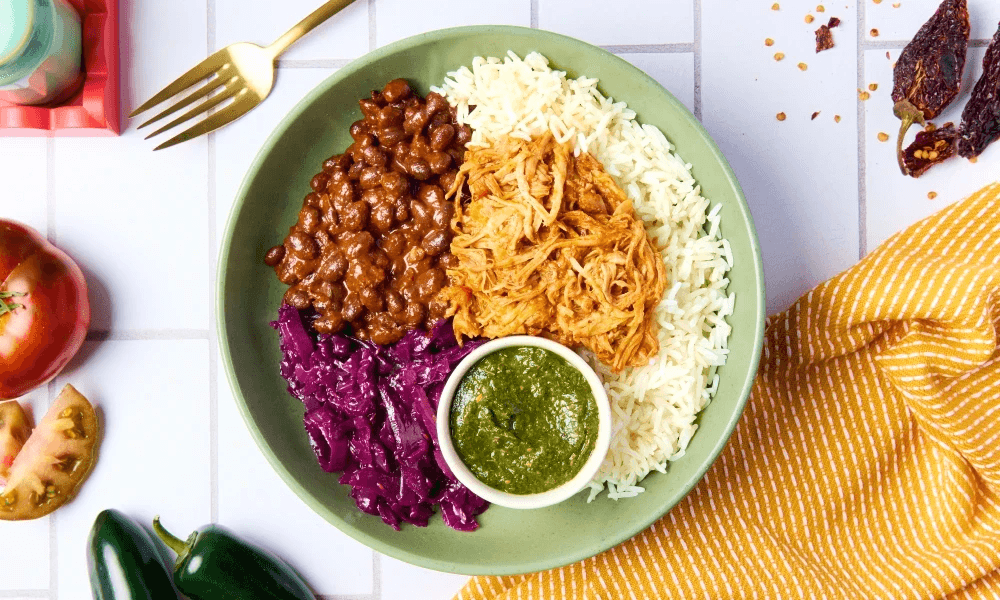
11. Eat on smaller plates
Larger plates mean larger portions, which usually leads to us eating more ( 14,15,16). This is the case for most of us; we feel as though we need to fill our plates for it to be a sufficient meal or a real meal. The solution is quite simple- eat on smaller plates. Research suggests that people tend to eat around 20 % fewer calories when they put their food on smaller plates ( 17).
When you’ve finished, allow yourself some time to assess if you want more.
12. Limit the use of cooking oils
Sometimes we use excessive amounts of fat and oil when cooking foods, when we can get great results with low-calorie spray oils, such as 1-calorie cooking spray. Non-stick pans and air fryers can also help to reduce the amount of cooking oil we use. Ask yourself if you need to use oil at all - you can stir fry using a little water instead!
13. Swap out that butter!
Butter is delicious but high in calories, boasting 102 calories and 14 grams of fat per teaspoon. Thankfully, there are plenty of delicious and even healthier alternatives. Spread a little olive oil (40 calories per teaspoon), a single serving (1/5) of avocado (50 calories), hummus (36 calories per tablespoon) or low-fat cream cheese (31 calories per tablespoon). Be inventive! Try tomato or fruit purees, or a little yoghurt, or even a little low-fat mayonnaise, as it spreads easily and you're only likely to use a teaspoon or less. Spread yeast extract or miso paste on your toast - high in flavour and low in calories! These are quite high in salt, though, so use in moderation and vary your choice of alternative spreads - there are plenty to choose from!

14. Read food labels
Reading food labels is a really good habit to get into. It helps to educate yourself on the calorie content and macros (protein, carbohydrates and fat) in various foods, so you can start to make more informed dietary choices and stay in control of your calorie intake. It can also help you to monitor things like your sodium intake - too much sodium has been linked to various health conditions(42), and may also cause water retention, which can make you gain weight.
15. Remove fat from meat and poultry
Yes, it can be the best part, and trimming off the fat usually means trimming off the flavour. But they’re also high in calories and removing visible fat can easily save you hundreds of calories! Make sure to cut off any visible fat before cooking as well, as it could render and soak the meat in all its flavoursome juices. And we wouldn’t want that…
It's the same for crispy crackling, whether it's chicken, turkey, or crispy pork crackling, you will find that eating the skin packs on extra calories. For example, a skinless chicken breast is 284 calories. Add the chicken skin, and you’re looking at 386 calories. Remove the skin before consuming to cut more calories.
16. Re-think sauces
Sauces can really ramp up the calorie content of your meals. Ketchup and mayonnaise can add more calories to your meals than you realise, with one tablespoon of mayonnaise containing 94 calories! Try minimising your consumption of sauces to reduce calories, or opt for the lighter options: Hellmans’ Light Mayo contains 35 calories per tablespoon; Sriracha sauce has two calories per tablespoon; Tabasco sauce has two calories per tablespoon.
With pasta sauces, opt for tomato-based rather than creamy sauces, or no sauce at all - just use some vegetable stock, which can be delicious! Don't thicken your gravy and strain the fat from any meat juices you add to it.
17. Switch to milk alternatives
Cow’s milk can be high in calories, with one cup containing up to 160 calories. To cut calories, try switching to milk alternatives:
- Soy Milk- 70 calories per cup
- Almond milk- 40 calories per cup
- Oat milk- 50 calories per cup.
Opting for low-calorie milk substitutes can help you manage the calories of your tea and coffee.

18. Be careful how you’re enjoying your coffee
Black coffee on its own has zero calories. It’s when we start adding things to our americano that a zero-calorie coffee can transform into a 570-calorie salted caramel mocha.
Enjoy your coffee without the whipped cream and the chocolate dustings; say no to adding sugar; and forgo the however many pumps of the vanilla and hazelnut syrup. Keep your coffee simple. If you don’t want a black coffee, choose a skinny vanilla latte (100 calories) or a cappuccino (120 calories). Ask your barista for low-calorie coffee options.
19. Invest in good cooking equipment
Having the right tools can make everything easier. Sometimes it’s how we’re cooking our food that is costing us calories. For example, a good non-stick frying pan or non-stick baking trays reduces the need for oils in cooking, which in turn eliminates calories. A George Foreman-type grill can remove up to 40% of the fat when grilling meats. An air fryer can dramatically help to reduce the amount of cooking oil you use. Accurate weighing scales help you to keep track of your portion sizes and calorie intake. A spiraliser can turn veggies into lower-calorie pasta substitutes. Have a look through your cupboards and see if you can make some upgrades. If cost is an issue, treat yourself to a new bit of kit each month, check out eBay, or visit your local charity shop - they often have lots of nearly new gadgets and cooking equipment for sale, and you're helping a good cause too.
20. Remove junk food
You can’t eat unhealthy, calorie-dense food if it isn’t readily available in your home - out of sight, out of mind. So, should you feel the need to want some junk food, you’ll be forced to go through the effort of going out and about. Removing junk food from the house creates the first obstacle to giving in to junk food temptations by making it less accessible and not readily available.
This obstacle can force you to assess if you really need the junk food and can deter you from eating out of boredom or stress.
21. Eat mindfully
Have you ever been in this spot: you’ve just made yourself a lovely meal, sat down, put on your latest Netflix series you’re currently bingeing (‘Squid Game’ for the win!) or random clips on YouTube to watch while you enjoy your meal, and suddenly the lovely meal you made for yourself is finished- with no memory of really consuming it? And before you know it, you’re headed back to the kitchen to make yourself another meal, or topping off your meal with a snack or two because you don’t feel like you’ve really eaten, and in some ways feel cheated.
Sometimes we can even snack mindlessly while we’re busy, distracted by that Instagram reel that’s popped up, the latest TikTok uploads on your feed, or even that book you're reading ( 18,19, 20). Mindfulness with eating is about paying attention to your food, on purpose, and focusing on your sensual awareness, thoughts and feelings and your experience with your food ( 21, 22). Eating attentively and mindfully can help you make healthier choices and also improve your self-control and prevent you from overeating ( 23 ). So, we need to be mindful of our eating so we can enjoy our foods without distraction.

22. Eat slowly!
Don’t rush eating your meals! Chewing your food slowly may help you feel fuller quickly, which can help you eat less ( 24,25,26,27, 28).
Eating slowly is part of eating mindfully, as we can appreciate and savour the tastes, textures and flavours of our meals. But eating slowly also has its benefits.
Our appetite is largely controlled by a hormone called ghrelin. After a meal, our gut suppresses ghrelin, which controls hunger, while also releasing fullness hormones ( 29 ). These hormones tell your brain that you’ve eaten, reducing the appetite, making you feel full, and helping you stop eating. This process takes about 20 minutes, so the reason we recommend eating slowly is so that we give our brain the time it needs to receive these ‘feel full’ signals ( 30, 31 ).
23. Chew your food!
It goes without saying that we chew our food, but the more chews we can get in per mouthful, the better! Research suggests that chewing food forty times (instead of the usual 15) can cut calorie intake by 12%. Increasing the number of chews before swallowing can help you eat less and feel fuller, quicker ( 32 ). So as much as you enjoy the food you’re devouring, there’s no need to rush! Slow down, chew your food thoroughly and enjoy each bite! Chewing your food more will help digestion and help you eat less.
24. Carbohydrate substitutions
We all love our carbs! Pasta, rice, pizza and bread- it’s a staple for many of us in our diets, however, they tend to be high in calories. It’s time to get creative with our food substitutions to deficit our calories:
- Cauliflower rice instead of rice
- Cauliflower pizza base
- Lettuce cups instead of burger buns
- Spiralised courgette, carrot, or swede instead of pasta or noodles
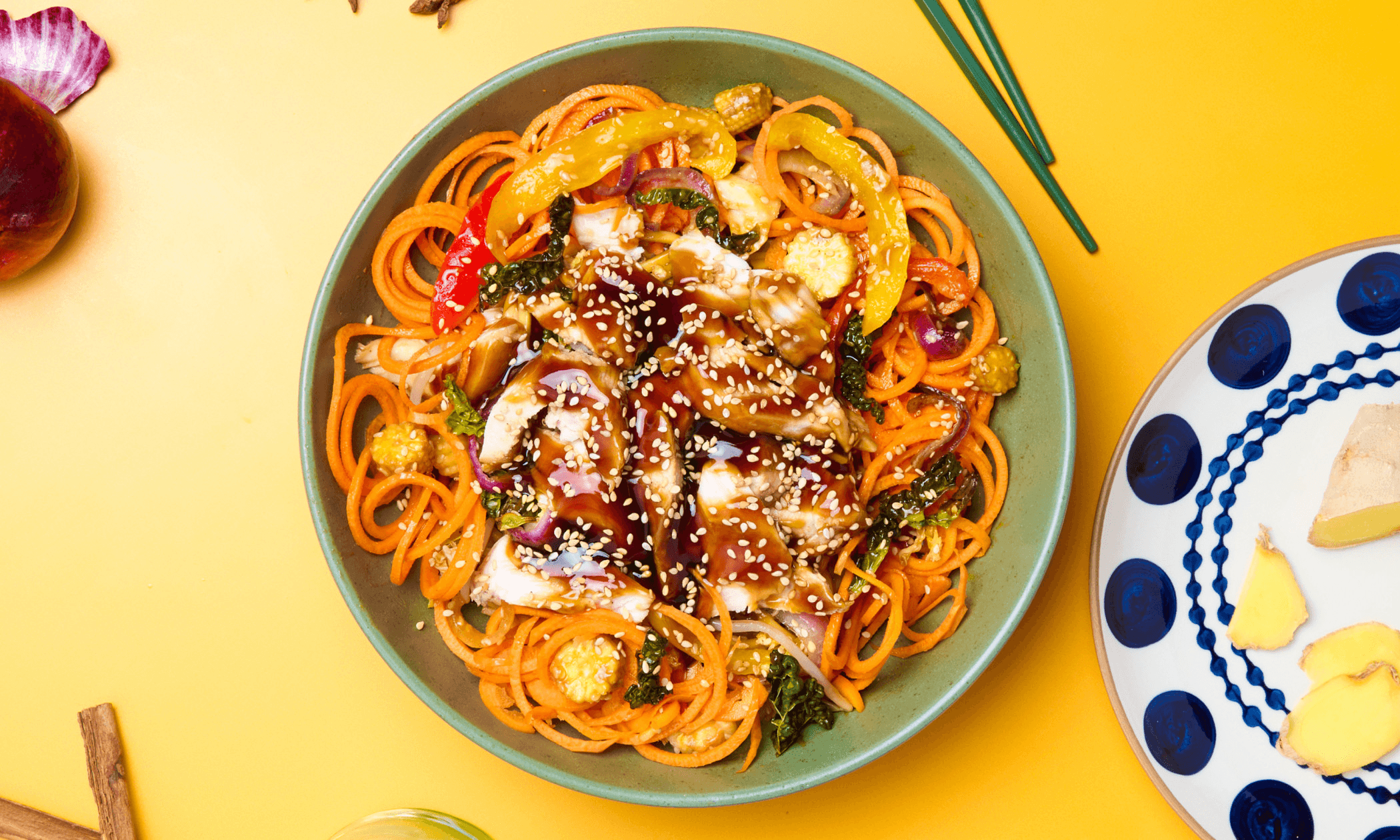
25. Eat with your non-dominant hand
It sounds silly, but eating with your non-dominant hand can help you eat slower, eat less, eat mindfully, and help prevent binge eating. According to a study from the University of Southern California, switching the hand you eat with can help control your calorie consumption. Using the non-dominant hand seemed to disrupt eating habits and cause people to pay attention to what they were eating. Switching your hand makes you more conscious of what you’re doing, therefore allowing you to be more conscious of your eating behaviours ( 33).
26. Increase your protein
Protein keeps you fuller longer. Protein, especially when compared to carbs and fats, helps you feel fuller with less food ( 34). This is because protein reduces levels of ghrelin, the hormone responsible for hunger. At the same time, protein boosts the levels of peptide YY, a hormone that makes you feel full ( 35, 36 , 37).
Protein takes longer for our bodies to break down, and because of this, we experience slower digestion, which makes us feel fuller for longer. Feeling fuller for longer keeps you away from snacking or adding in extra calories to your day!
Protein also helps curb cravings. Cravings are different from a true need for food. They come from your brain, not your stomach. Cravings can be hard to control, but research shows that eating more protein can help curb these cravings- even late-night fridge raids (sound familiar?).
One study in overweight men showed that increasing protein to 25% of calories reduced cravings by 60% and the desire to snack at night by half ( 38).
Another study in overweight teen girls found that eating a high-protein breakfast reduced cravings and late-night snacking.
Check out our blog for more information about protein and weight loss.
27. Sleep more
Sleep can help with weight control as it has an impact on our hormones and our metabolism. One such hormone is ghrelin- a ‘hunger hormone’, and levels of this increase as we become sleep deprived, as our hunger and appetites are stimulated which can increase our risk of unhealthy weight gain and obesity. When we are receiving enough sleep, our moods are more upbeat and we feel more able to take on life and its challenges ( 39,40).
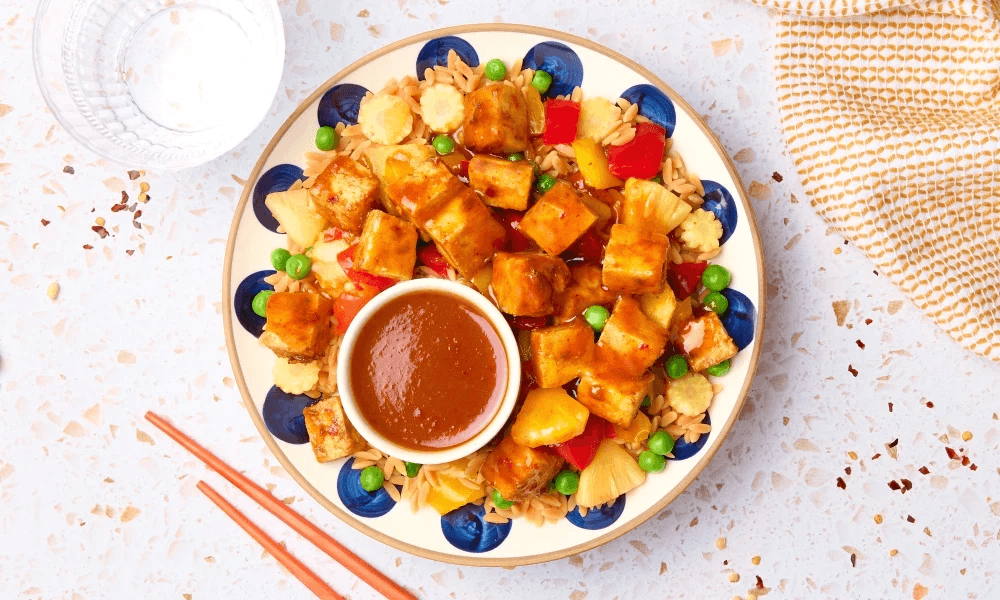
28. Ordering Prep Kitchen Meals!
Meal prep is one of the most effective ways of managing your portions, calories and macros, so when you order your meals, you are in control of how many calories you want to consume each day. It’s simple- jump on the website, browse the calories and nutritional content of the meals, make your meal selections, and order away.
Prep Kitchen also give you the option of selecting meals based on ‘weight loss’ or ‘ muscle gain’, and gives you further choice by giving you the option to add more protein to your meals, and the option to have fewer carbs.
Designed by nutritionists and prepared by skilled chefs, Prep Kitchen meals deficit your calories in a healthy way they cook and prepare their meals, the mathematical balance of proteins, carbs and fats, and delicious locally sourced ingredients, with flavours that leave you completely satiated. Order yours today!
If you enjoyed this article, check out these other related articles on our blog:
How to lose, gain, or maintain with Prep Kitchen
Updated 31/7/25
